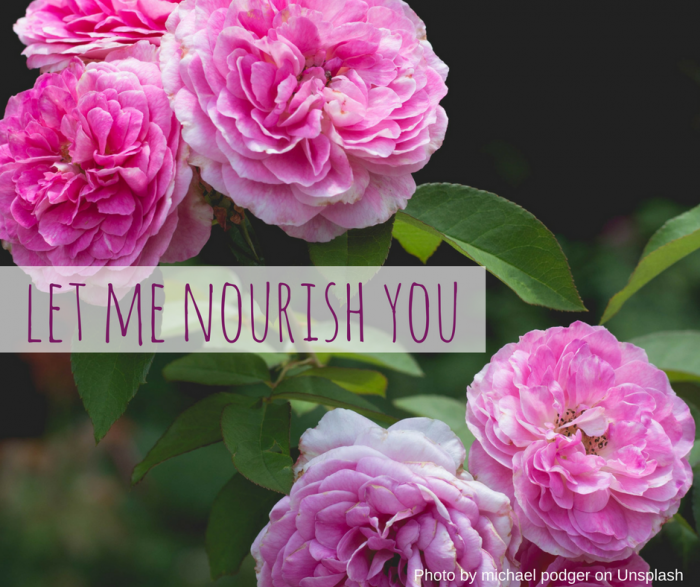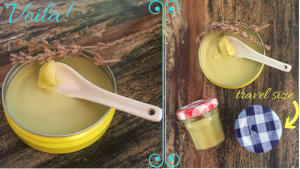IN YOUR FACE – THE 411 ON SKIN CARE PRODUCTS

Happy Friday!
The answer to all our health and beauty questions is staring us in the face. While we have been living in a chemical bubble for some time, there is shift going on and we are beginning to wake up to the notion that everything we need to thrive is provided by mother nature. Our great grandmothers knew it and lived by it every day. The natural approach to health and beauty is slow and steady but the results are gorgeous and long-lasting.
the cosmetic industry
There was an article in the New York Times this week For Cosmetics, Let the Buyer Beware which painted a not so pretty picture for cosmetics on the market and regulation of same.
The article sites a recent editorial in JAMA Internal Medicine in which Dr. Robert M. Califf, who served as F.D.A. chief under President Obama, noted, “The cosmetic industry remains largely self-regulated. History has repeatedly shown that when there is insufficient regulatory oversight, a few unscrupulous people or companies will exploit the vulnerable public for profit.”
buyer better beware
I recently ordered a free sample of a new skincare cream advertised on my Instagram feed. I am withholding the name on purpose but will explain how to determine if a product contains good quality, healthy ingredients or not further in this post. The product was touted as Joanna Gaines’ newest venture, one for which she planned to leave her wildly successful HGTV series ‘Fixer Upper.’ The advertisement for the free sample included compelling before and after photos and celebrity endorsements. The product claims to remove wrinkles, age spots and basically give your face a lift without going under the knife. It sounded too good to be true but it was free (well except for shipping ;-), so I ordered the sample. I really like Joanna Gaines and her show. She seems natural, genuine and real. I was intrigued and hoped that she had put out a new, natural product that made good on its claims. It turns out, the product is anything but natural and certainly not a miracle. Thankfully, after a bit more research, I learned that Joanna Gaines is not leaving her show and has nothing to do with the facial cream. In her post Don’t Believe Everything You Read, dated April 21, 2017, she concludes with “No! I am not getting into the business of facial creams. And No! We are not expecting baby #5. And no worries, believing some of these stories happens to the best of us. In summary, don’t buy the facial cream, friends.”
 So maybe you paid the $4.97 in shipping for the ‘free’ sample like me. Maybe you tried it. As soon as I received it, I looked at the ingredients and realized I am in possession of a cream that I can’t even give away in good conscience. While this may not be a wonder cream endorsed by a celebrity (which means more people flock to buy it sight unseen), this is one example of many, many other products on the market which tout quick fixes and contain cheap, often harmful ingredients.
So maybe you paid the $4.97 in shipping for the ‘free’ sample like me. Maybe you tried it. As soon as I received it, I looked at the ingredients and realized I am in possession of a cream that I can’t even give away in good conscience. While this may not be a wonder cream endorsed by a celebrity (which means more people flock to buy it sight unseen), this is one example of many, many other products on the market which tout quick fixes and contain cheap, often harmful ingredients.
Here are some of the ingredients that caught my eye and what you should know about them:
Isopropyl Myristate (2nd ingredient after water) – Made of 1) isopropyl alcohol (a propane derivative and general cleaning solvent) also known as rubbing alcohol and 2) myristic acid. Myristic acid is a naturally-occurring fatty acid often derived from animals. The animal industry is not well regulated even for natural, organic products so unless you confirm the myristic acid is from a non-animal source, you will likely be applying an ingredient that is in commercial dog food to your face.
Isopropyl Myristate is used in skin care products to achieve good absorption into the skin. It is also used as a pesticide against head lice which works by dissolving the wax that covers the outer body of lice, effectively killing them by dehydration. Hmmm… not pretty. Isopropyl Myristate has increased penetration properties (think of how it dissolves the protective barrier on lice leading to dehydration) which can lead to harmful side effects for you especially if there are carcinogenic ingredients in the skin care product. We do not need this ingredient to achieve beautiful skin. To the contrary. Some alternatives include: nut butters, olive oil, oil of lovage, coconut oil and extract from seed kernels of nutmeg.
Dimethicone – (6th ingredient of 32 total ingredients – so a lot of it is in this product) Silicon oil man-made in the laboratory used as a skin and hair conditioner. Dimethicone makes the product spreadable and can fill in fine lines making wrinkles appear less noticeable. However, instead of being absorbed by the skin and nourishing it like natural, healthy ingredients do, this ingredient forms a plastic-like barrier trapping everything in and letting little out, which will result in dryer, older-looking skin in the long run. While the skin may look and feel smooth for a time, I read that it may stay on you for days even after washing as it leaves an impenetrable layer on the skin. I am not a chemist but I am imagining the harmful stuff in this cream being trapped under the skin thanks to dimethicone. Again, you do not need this ingredient to achieve beautiful skin. Beautiful skin breathes. Some alternatives include: jojoba oil and meadowfoam seed oil.
Cholesterol – (14th ingredient) A steroid alcohol found in all animal fats and oils, nervous tissue, egg yolk and blood. Can be derived from lanolin, which is product of the oil glands of sheep. Cholesterol is used as an emollient in many skin-care products and cosmetics to condition, thicken, stabilize and bind water. This just more nastiness – likely from really icky sources – and not necessary. Alternatives: solid complex alcohols (sterols) from plant sources.
Phenoxyethanol – (18th ingredient) A synthetic preservative, which has sprung up to replace parabens which the public now knows to avoid. However, phenoxyethanol is no better. Chemical products like these, even at low dosages, accumulate in the body over time and can cause disastrous consequences down the road. See below screen shot of the Material Safety Data Sheet (MSDS) which states that phenoxyethanol is extremely hazardous in the case of eye contact and very hazardous in case of skin contact (irritant), ingestion or inhalation. You should note that data is not available to determine carcinogenic effects and other effects which is a bad sign. Most of the synthetic chemicals used in the beauty industry have not been evaluated for safety yet, or ever will be. That’s scary. Phenoxyethenol is is also listed as toxic to kidneys, nervous system and liver.

Often (but not always) preservatives are necessary and beneficial to keep a product from attracting harmful microorganisms, water borne bacteria and to prevent the growth of mold, fungus and yeast. Preservatives are needed mainly for emulsions and water-based products which are prone to water-borne bacteria and microbial contamination. Good news! There are natural preservatives without all the aforementioned nastiness. Phenoxyethenol alternatives include: geranium oil (smells soooo lovely!), antioxidants, vitamin E oil, rosemary oil and grapefruit seed extract.
It would take me a week to analyze all 32 ingredients in this product but there are enough truly harmful and unnecessary ingredients to make this new ‘miracle’ cream anything but miraculous.
Why does this product and countless others include harmful and unnecessary ingredients if natural alternatives are available? It comes down to cost, shelf life and the desire for quick fixes. Synthetic ingredients made in a laboratory are less expensive and keep products on the shelves longer so large companies can make huge quantities, sell more and make more money. Also, chemicals have the ability to make a change to your skin, body, mind, etc. much quicker than the natural alternatives like extracts from plants and seeing a therapist ;-). So what do you do?
Take a deep breath and consider the natural path which takes longer but offers beautiful, lasting results.
learn to read labels
The Institute for Integrative Nutrition taught us to avoid food products containing unnecessary chemical additives and preservatives. The general rule of thumb is if you can’t pronounce it, do not eat it or put it on your skin. There are exceptions (see below*). When it comes to food, it’s relatively easy to decipher if an ingredient is a whole food or a processed additive but it becomes a bit more difficult with topical skin care creams. You will need to become a good private investigator with your research on skin care products and ingredients as the chemical, beauty and pharma industries pay big money to promote their products as safe and miraculous and to bury the stories from little ‘ol people like me. I usually conduct a search like this – ‘chemical/ingredient name + dangers’ and consult multiple credible organizations and sources. If the person or organization appears to have a financial gain in promoting a specific product or claim, beware.
*Nota bene: Just because you have never heard of or may not be able to pronounce an ingredient name, does not mean it is not natural and beneficial. INCI (International Nomenclature of Cosmetic Ingredients) is a system of names for waxes, oil, pigments, chemicals and other ingredients in soaps, cosmetics, etc. based on scientific names and other Latin and English words. Some examples of the INCI names for ingredients include Vitamin E – Tocopherol; Lavender Oil – Lavandula Angustifolia Oil. While these may sound like synthetic chemicals made in a lab, they are perfectly natural and beneficial when derived from good quality sources and used correctly.
Also note, some synthetic ingredients obtained from plants will have ‘plant-based’ or ‘derived from coconuts’ in parenthesis after the ingredient, which does not necessarily mean they are bad but does indicate that they have gone through a chemical process and something to be aware of. If you have a question, feel free to contact me here. I know it’s confusing!
nourish your skin naturally
I hope that you are now convinced that quick, chemical fixes are not miracles and cause problems that will kick you in the as$ later. If you destroy the acid mantle (barrier) of the skin, you destroy the skin’s ability to restore and repair itself naturally.
The body is designed to take care of everything. Our job is to feed and nourish it – with fresh, healing food (inside and out), clean water, fresh air and sunshine – and give it sufficient time to rest and rejuvenate. That is the key to beauty.
Our skin is best served when we use a product with a blend of natural, organic oils that feed, nourish, hydrate and moisturize the skin, cleanse and clean pores, kill bacteria, wipe away grease and encourage healthy skin growth. Natural, organic, vegan skincare products do that for the skin and give the body a chance to cycle out the old, dead cells and create new, healthy ones. The aging process is slowed down when new cells are allowed to come to the surface naturally, without trauma. Scrubbing your face raw with abrasive chemicals is not the answer.
While I believe homemade is best, you can find organic products made from plants on the market. Look for labels that say ‘organic, vegan, cruelty-free.’ Since I make my own skin care products, I do not have a lot of familiarity with what’s best and what’s not in terms of products, which is why it’s important to read labels. I have tried Avalon Organics – a widely available, commercial brand that’s organic and vegan (with the exception of some lip balms which contain organic beeswax). From their website, “Avalon Organics® products do not contain meat or by-products of animal slaughter. All cruelly-obtained ingredients are also excluded, even if the animal is not killed.” You can find Avalon Organics products at Vitacost, normally at a discount. I also like Evan Healy products even though they are more expensive. Amazon sells some Evan Healy and you can find the line at Whole Foods.
Big businesses will meet the growing demand for organic and cruelty-free products but in order to keep costs low, they will turn to synthetic ingredients. Always do your own research and consult numerous sources. Do not take my word for it or anyone else’s.
homemade is best
 I have been making my own skincare products for over a decade and am currently working towards my Diploma in Natural and Organic Skincare Formulation. While good quality, organic products are expensive, often a handful of ingredients is all you need to achieve beautiful skin. I keep a supply of coconut oil, Shea butter, vitamin E oil, castor oil and essential oils like lavender, geranium, eucalyptus and rosemary on hand to clean and nourish my skin. Essential oils not only smell wonderful, but also have their own, unique healing and beautifying properties. I have provided and will continue to provide DIY recipes on the mybelavie blog. Here’s a link to a recipe for my favorite everything balm – The Oil Cleansing Method – I use it for cleansing as well as a skin balm for face and body. I also offer some of my homemade products for sale on my SHOP page. I am working on a full line of skin care products which hopefully will be out this year. Stay tuned!
I have been making my own skincare products for over a decade and am currently working towards my Diploma in Natural and Organic Skincare Formulation. While good quality, organic products are expensive, often a handful of ingredients is all you need to achieve beautiful skin. I keep a supply of coconut oil, Shea butter, vitamin E oil, castor oil and essential oils like lavender, geranium, eucalyptus and rosemary on hand to clean and nourish my skin. Essential oils not only smell wonderful, but also have their own, unique healing and beautifying properties. I have provided and will continue to provide DIY recipes on the mybelavie blog. Here’s a link to a recipe for my favorite everything balm – The Oil Cleansing Method – I use it for cleansing as well as a skin balm for face and body. I also offer some of my homemade products for sale on my SHOP page. I am working on a full line of skin care products which hopefully will be out this year. Stay tuned!
Enjoy your weekend.
CLICK HERE TO RECEIVE BELAVIE WEEKLY POSTS WITH HEALTH TIPS, BEAUTY TIPS AND RECIPES DIRECT TO YOUR INBOX PLUS A FREE GIFT.
READY TO TAKE YOUR HEALTH AND WELLNESS TO ANOTHER LEVEL THROUGH STRUCTURED HEALTH COACHING? CLICK HERE FOR A FREE 30-MINUTE CONSULTATION AND REVIEW OF YOUR HEALTH HISTORY.
CHECK OUT MY SHOP PAGE TO PURCHASE BELAVIE ORGANIC SKINCARE PRODUCTS.
CLICK THE BELOW BUTTONS TO SHARE THIS POST ON YOUR SOCIAL MEDIA OR EMAIL TO A FRIEND.


I’m glad you discussed this very important and relevant topic. Thank you, Susie!
You’re welcome Anne!!
Important topic, Susie! The Environmental Working Group has a great free app so you can scan a product and see how safe/unsafe it is. They have a rating system and also have a NO list of ingredients to stay away from (known allergens, carcinogens, etc.). Definitely check it out if you haven’t!